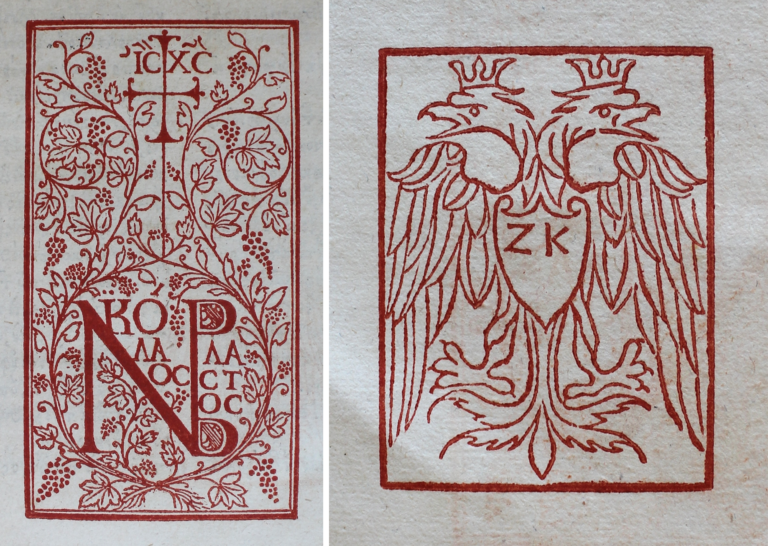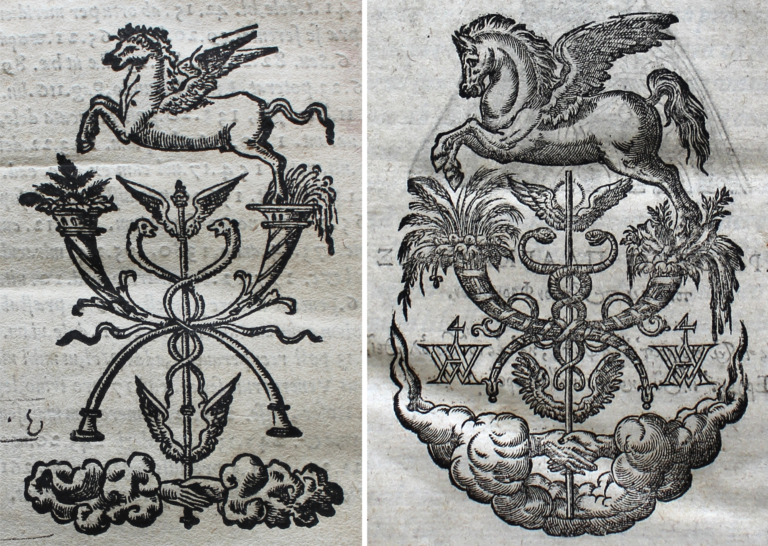Home / History / Social History / The History of the Book in the Early Modern Period: 1450 to 1800 / Looking at printers’ devices
This article is from the free online
The History of the Book in the Early Modern Period: 1450 to 1800


Reach your personal and professional goals
Unlock access to hundreds of expert online courses and degrees from top universities and educators to gain accredited qualifications and professional CV-building certificates.
Join over 18 million learners to launch, switch or build upon your career, all at your own pace, across a wide range of topic areas.

 Fig 1. Printers’ devices of Nicolas Blastos
Fig 1. Printers’ devices of Nicolas Blastos  Fig 2. Printers’ devices of Jean Petit
Fig 2. Printers’ devices of Jean Petit  Fig 3. Aldus Manutius’ earliest printer’s device (A1) is in his edition of Poetae Christiani (Venice, 1502), π8v,
Fig 3. Aldus Manutius’ earliest printer’s device (A1) is in his edition of Poetae Christiani (Venice, 1502), π8v,  Fig 4. On the left, the printers’ device of Chrestien Wechel on the verso of the final leaf of Antoine Mizauld, Cometographia (Paris, 1549)
Fig 4. On the left, the printers’ device of Chrestien Wechel on the verso of the final leaf of Antoine Mizauld, Cometographia (Paris, 1549)





